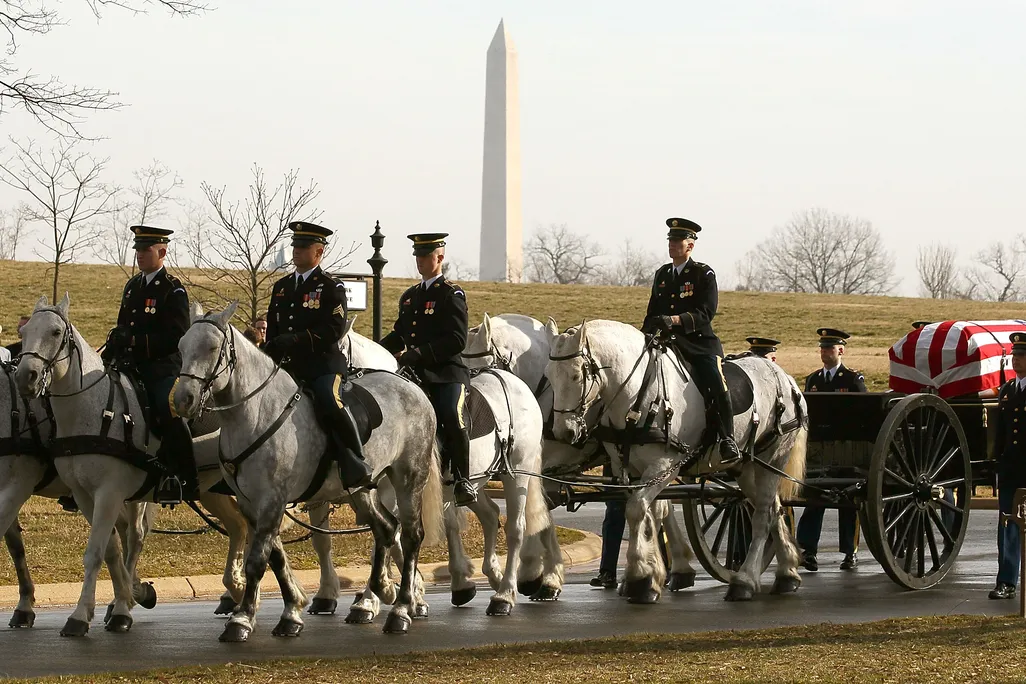The U.S. Army Is Getting Rid of Most of Its Ceremonial Horse Units
Senior military leaders at five forts will have one year to transfer, adopt out or donate the horses under their command

The United States Army plans to phase out most of its ceremonial cavalry units and put the horses up for adoption. Officials hope the move will “align more resources with warfighting capability and readiness,” according to a July 2 announcement.
Shrinking its “military working equid” programs—which also include mules and donkeys—is expected to save the Army roughly $2 million per year, reports Tara Copp for the Associated Press. Soldiers who work with horses will also be reassigned to new duties.
Quick facts: Horses on the battlefield
- While large-scale cavalry charges were common through World War I, advances in battlefield technologies eventually ended such practices.
- The Army’s last true cavalry charge took place in the Philippines during World War II.
Starting this month, the Army is sunsetting the horse units at Fort Irwin in California, Fort Huachuca in Arizona, Fort Riley in Kansas, Fort Sill in Oklahoma and Fort Hood in Texas.
Military leaders at each fort will have one year to transfer, adopt out or donate the horses under their command. None of the horses will be sold. Veterinarians on the Army Surgeon General’s Military Working Equid Task Force will support the transition and help ensure the animals go to “appropriate owners,” according to the statement.
The Army has 236 horses, mules and donkeys, reports Task & Purpose’s Nicholas Slayton. Of those, 141 will be given away.
The creatures are “part of the Army family,” Steve Warren, an Army spokesperson, tells the AP. “We’re going to treat them with compassion.”
However, the Army isn’t getting rid of all of its horses. The Old Guard caisson units that conduct military funerals at Arlington National Cemetery in Virginia and Joint Base San Antonio in Texas will remain in place.
In recent years, the Army has faced scrutiny for its treatment of horses. In February 2022, two horses stationed at Arlington National Cemetery died within 96 hours of each other. Veterinarians found 44 pounds of gravel and sand in one animal’s stomach, which caused “preventable intestinal compaction,” CNN’s Drew F. Lawrence and Katie Bo Lillis reported in April 2022. Two more horses from the same unit died later that year.
The deaths triggered a review by the Army’s Public Health Command-Atlantic, which uncovered problems with the Army’s horse units, per CNN. The investigation revealed “widespread neglect,” including “dry and moldy feed, cramped and unsanitary living conditions, and inadequate veterinary oversight,” write Steve Beynon and Drew F. Lawrence for Military.com.
“More than 250 animals across a dozen sites were assessed, many found to be underfed, poorly housed and suffering from health issues due to improper [hoof] care, inadequate shelter and exposure to dangerous chemicals, including rat poison,” writes the publication.
The Army suspended the horse unit at Arlington National Cemetery for two years while it worked on making improvements. Last month, the horses returned to service with new individually fitted saddles, a lighter wagon for carrying caskets, larger stalls and more time off. A $30 million, five-year budget was approved last year, and the unit is getting a new horse farm, reports Business Insider’s Kelsey Baker.
“Sustaining our current budget is critical to the continued modernization of our caisson program, which encompasses personnel recruitment, herd acquisition, comprehensive training, equipment upgrades and facility improvements,” Patrick Husted, a lieutenant colonel who serves as a spokesperson for the unit, tells Business Insider in an email.
For thousands of years, horses have played a crucial role in military operations. However, in the United States, they’ve largely been relegated to ceremonial functions since the end of World War II. Special Forces soldiers also used horses in Afghanistan in the early 2000s, though they were obtained locally./https://tf-cmsv2-smithsonianmag-media.s3.amazonaws.com/accounts/headshot/SarahKuta.png)
